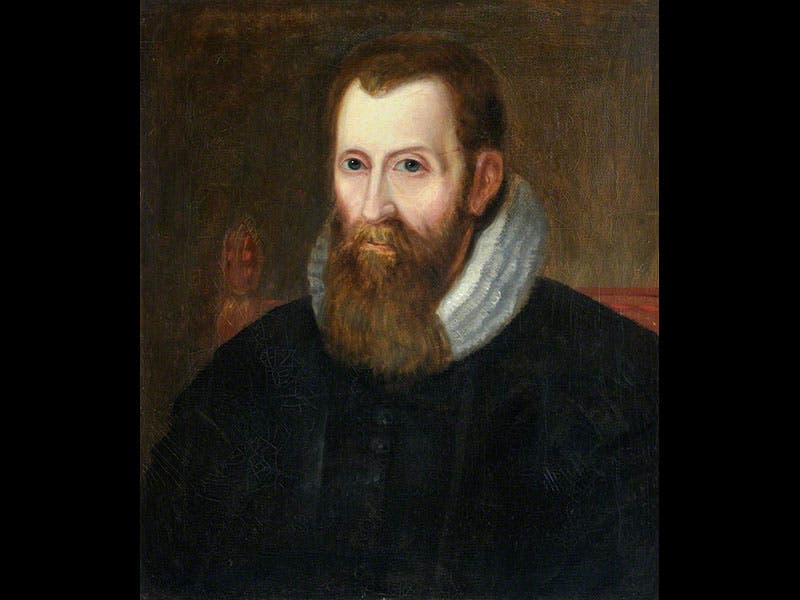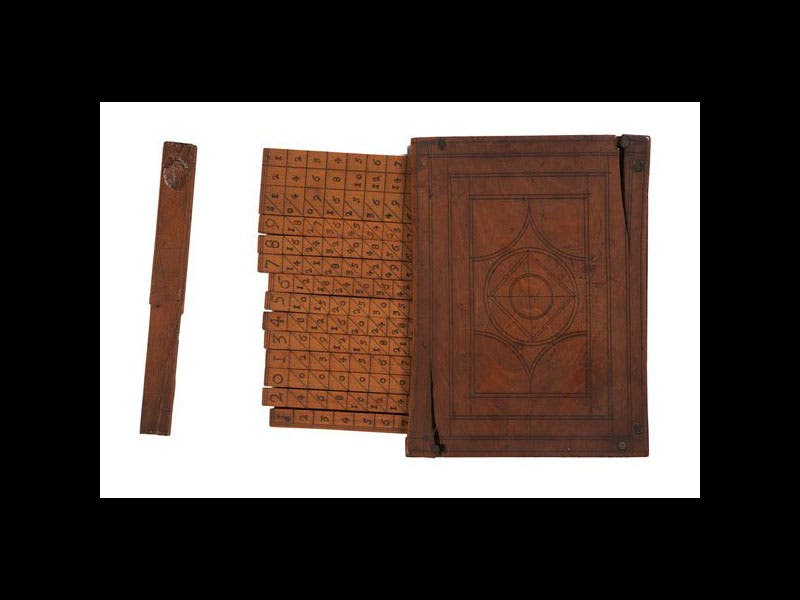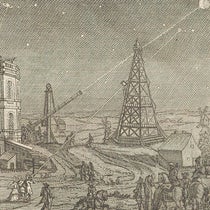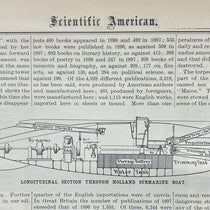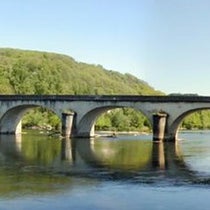Scientist of the Day - John Napier
John Napier, a Scottish mathematician (and the 8th Laird of Merchiston) died Apr. 4, 1617, at the age of about 67. Napier invented those favorite tools of your trig class days: logarithms. Napier spent about twenty years calculating the logarithms of the sines and cosines of every angle down to the nearest minute, 13,725 calculations in all, which he did to 7 decimal places. The first log tables were published in 1614 in his Mirifici logarithmorum canonis descriptio, which we have in the History of Science Collection (first image above). Logarithms are one of those rare scientific advances that came out of nowhere; they could have been invented by anyone, or by no one. But they came at a very opportune time, especially for Johannes Kepler, who was quite tired of continually having to multiply six digit numbers together and was quite happy to learn that he could add logarithms instead.
Napier's logarithms are constructed as exponents to the base e (= 2.71828...); his disciple Henry Briggs soon suggested an alternative system using base 10. Both are in use today. It is somewhat surprising that Napier knew nothing about bases or the number e. Instead, he generated his logarithms kinematically, by comparing the velocities of two bodies, one moving at a constant rate, the other decelerating at an increasing rate (a rate that we would now call "logarithmic"). Napier also invented a clever set of multiplication aids known as "Napier's bones," which he may have used in calculating his logarithms (third image). His book on the bones, the Rabdologiae (1617) is also in our Library.
Napier spent his last days at the family "castle" of Merchiston in Edinburgh; the building now sits on the campus of Napier University, and at the present time is the anchor of a recently-added glass-and-aluminum building for the Faculty of Computing (fourth image). It is a safe guess that the castle, built in the sixteenth century, will outlive the modern addition.
There are only a few surviving portraits of Murchison. This one (second image) is in the Royal Observatory of Edinburgh.
Dr. William B. Ashworth, Jr., Consultant for the History of Science, Linda Hall Library and Associate Professor, Department of History, University of Missouri-Kansas City. Comments or corrections are welcome; please direct to ashworthw@umkc.edu.



